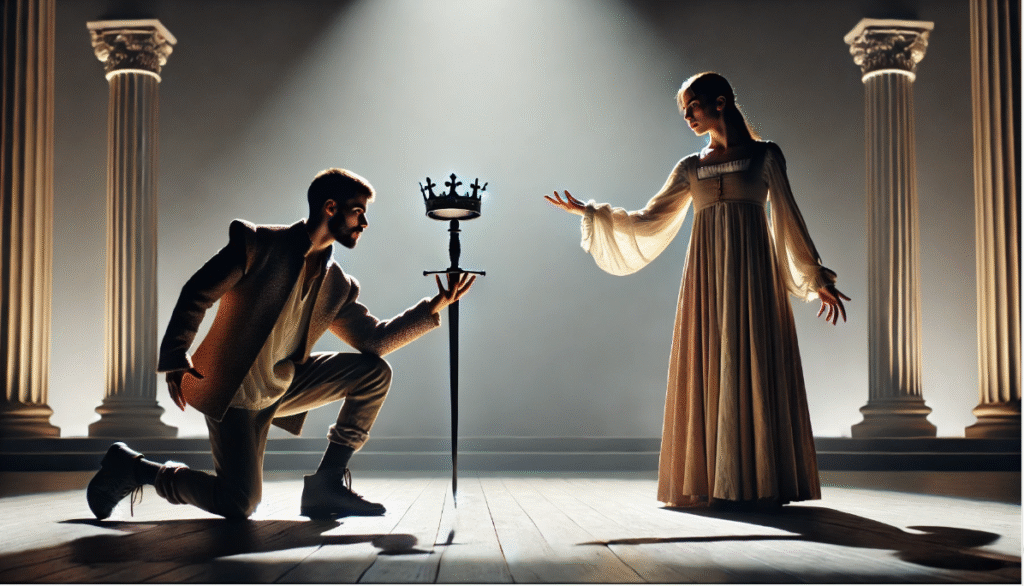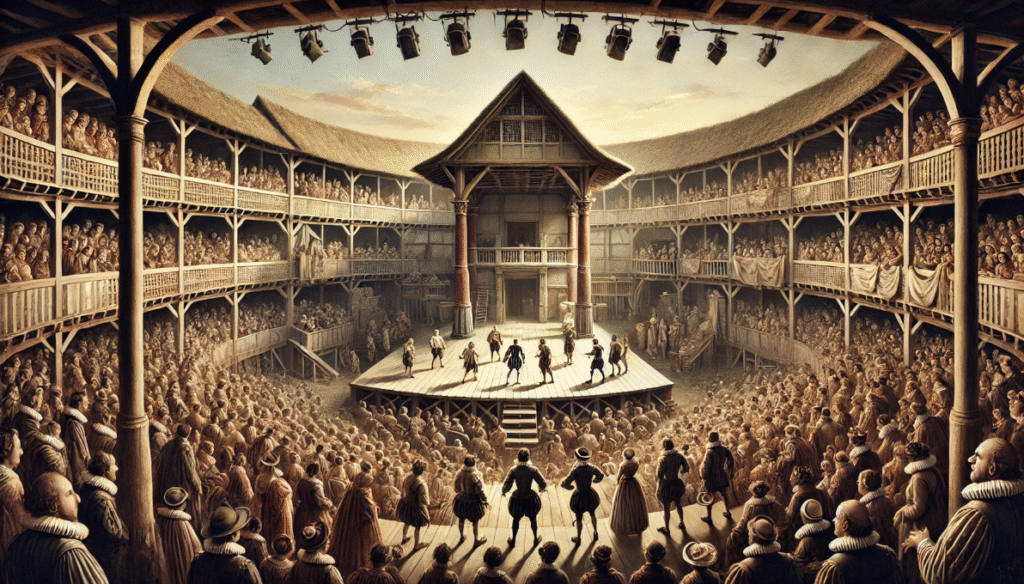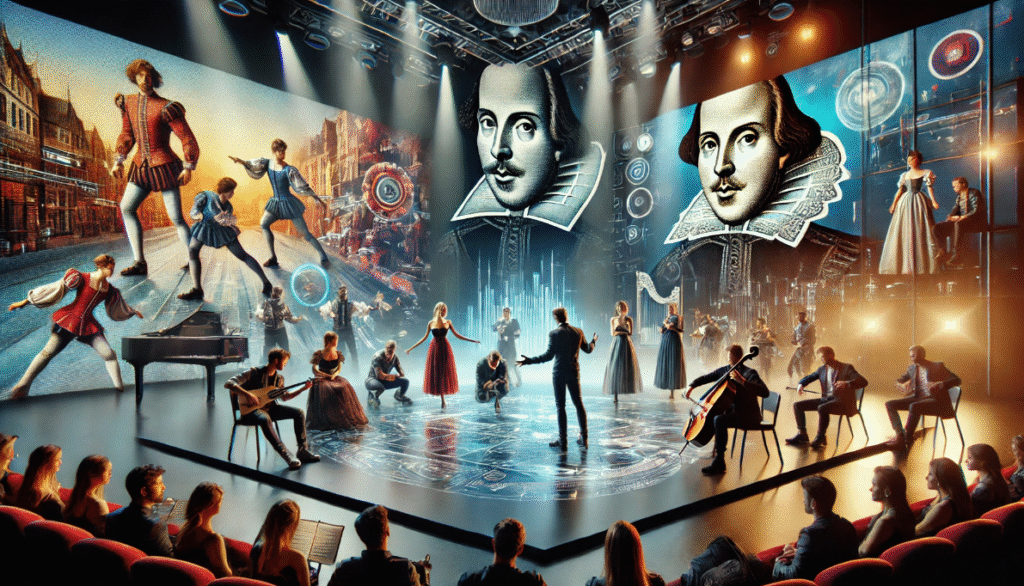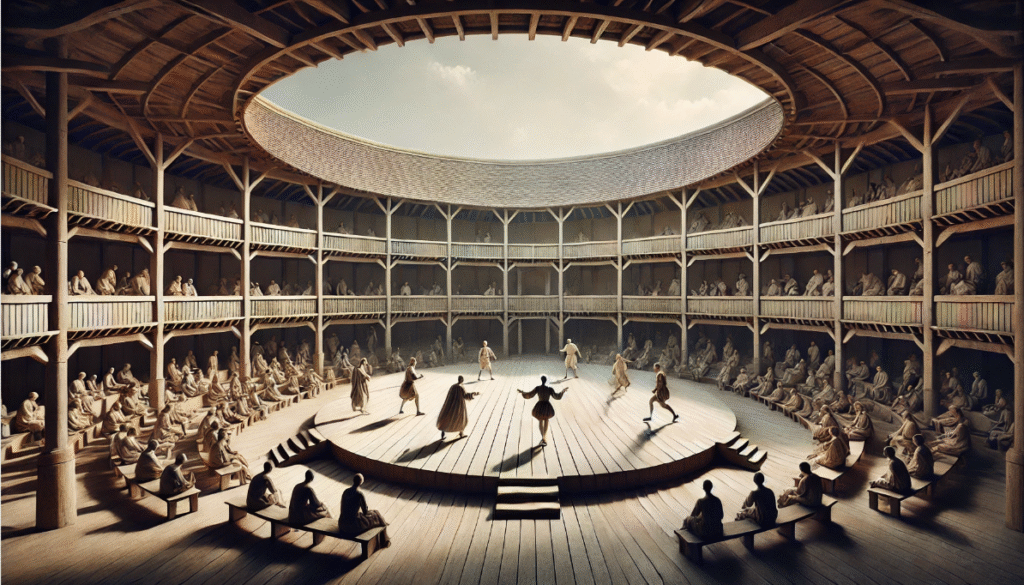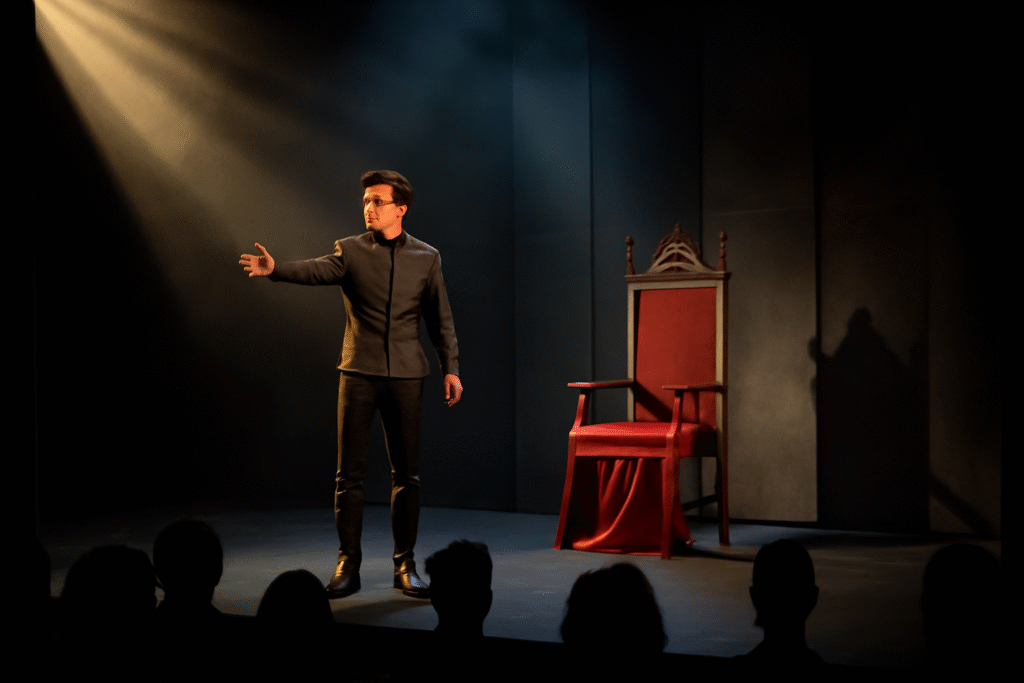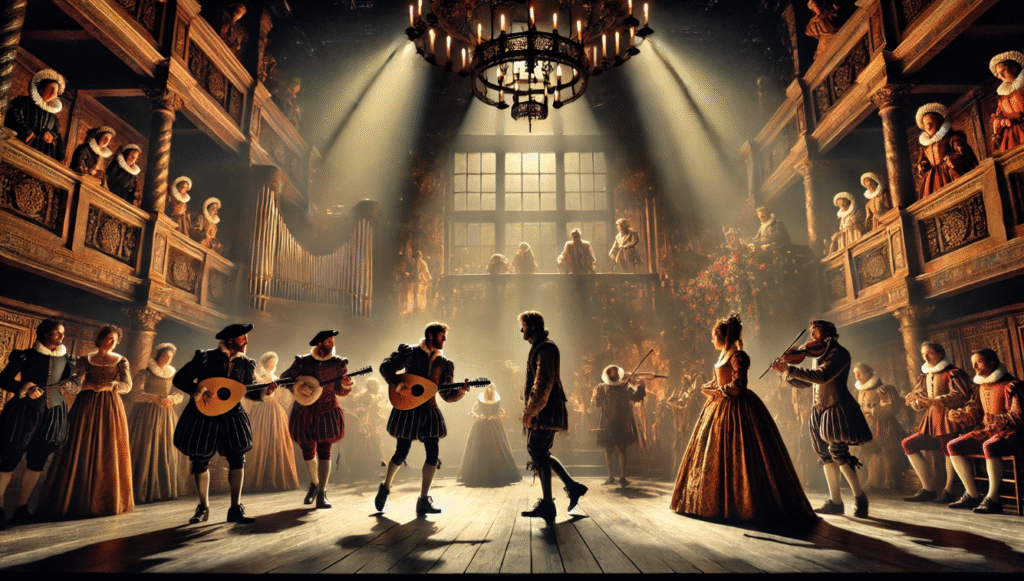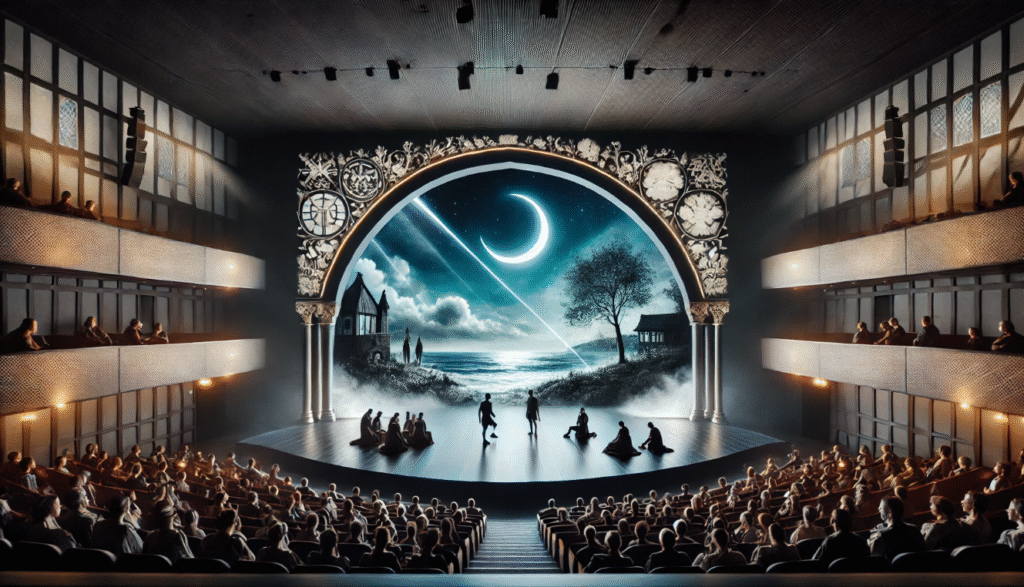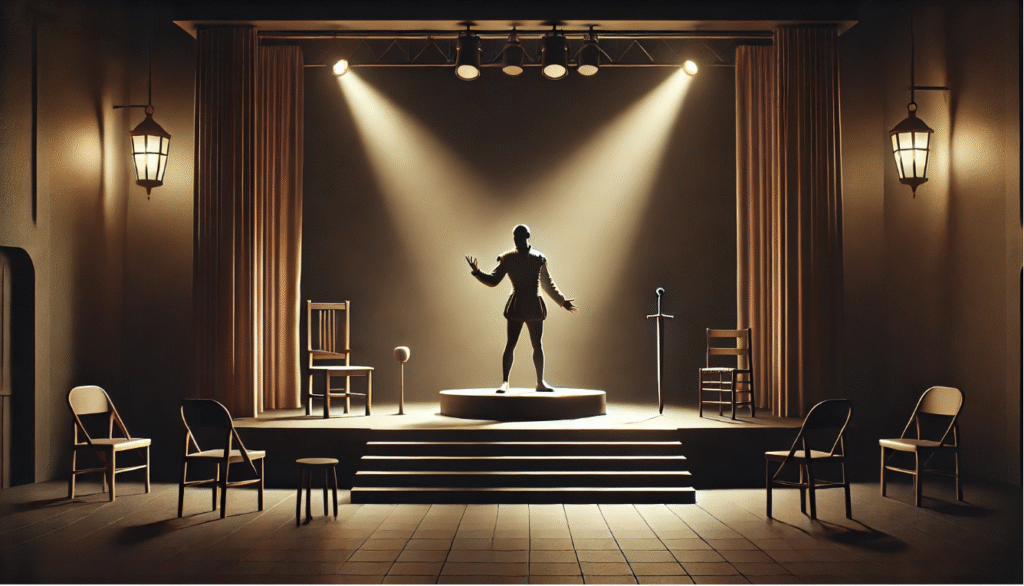Picture yourself in the Globe Theatre, 1600, the wooden beams creaking under a restless crowd as Hamlet unfolds. The air hums with anticipation, not from lavish sets or dazzling lights, but from the raw power of words and actors connecting directly with you. The impact of Shakespearean stagecraft on audience experience lies in this alchemy—turning minimal resources into unforgettable emotional journeys. Shakespeare’s genius for immersive storytelling, poetic language, and audience interaction still shapes how theaters captivate today. This article explores how these techniques create profound engagement, offering insights for theater enthusiasts, directors, actors, and students eager to understand and apply Shakespeare’s timeless methods. As a theater scholar with over a decade analyzing performances at venues like Shakespeare’s Globe, I’ll uncover how these stagecraft elements resonate in modern theater, ensuring you leave inspired to reimagine audience connection.
Understanding Shakespearean Stagecraft
Defining Stagecraft in the Elizabethan Era
Stagecraft encompasses the theatrical tools—staging, props, costumes, lighting, and actor-audience dynamics—that bring a play to life. In Shakespeare’s Elizabethan era, theaters like the Globe operated under constraints that fueled creativity. Built in 1599, the open-air Globe relied on natural light and minimal props, with no curtains or elaborate backdrops. This simplicity demanded that actors and playwrights captivate audiences through performance and language alone. Shakespeare leveraged these limitations, crafting plays that turned sparse stages into vivid worlds. His stagecraft wasn’t just technical—it was a storytelling revolution that prioritized emotional resonance over spectacle.
Core Elements of Shakespeare’s Stagecraft
Shakespeare’s stagecraft thrived on ingenuity, transforming constraints into opportunities. Key elements include:
- Minimalist Staging: With no sets to depict castles or forests, Shakespeare used descriptive dialogue to paint scenes. In A Midsummer Night’s Dream, the forest comes alive through characters’ words, not props.
- Rhetorical Language: His use of iambic pentameter and vivid imagery, like Macbeth’s “tomorrow and tomorrow” soliloquy, crafted emotional depth that gripped audiences.
- Audience Interaction: Shakespeare broke the fourth wall with asides and soliloquies, making spectators feel like confidants. In Richard III, the titular character’s direct addresses create a chilling intimacy.
- Symbolism and Costumes: Simple props, like Yorick’s skull in Hamlet, carried profound meaning, while costumes signaled character status or transformation.
- Expert Insight: Theater historian Dr. Farah Karim-Cooper notes, “Shakespeare’s stagecraft was revolutionary because it turned the audience into co-creators, relying on their imagination to complete the story.”
These elements laid the foundation for an immersive audience experience, a blueprint still relevant in today’s theaters.
The Impact of Shakespearean Stagecraft on Audience Experience
Emotional Engagement Through Language
Shakespeare’s language is the heartbeat of his stagecraft, driving emotional connection. His use of iambic pentameter mirrors natural speech rhythms, making dialogue feel immediate and alive. In Macbeth, the dagger soliloquy (“Is this a dagger which I see before me?”) plunges audiences into Macbeth’s tormented psyche, blending fear and ambition in a visceral way. This linguistic intensity invites spectators to feel the character’s inner turmoil. Modern playwrights, like Sarah Ruhl, echo this by prioritizing poetic dialogue to evoke emotion, proving Shakespeare’s influence endures. His words don’t just tell a story—they make audiences live it.
Immersive Storytelling Through Minimalism
The Globe’s bare stage forced audiences to imagine sprawling battlefields or stormy seas, a technique that heightened engagement. In King Lear, the storm scene relies on actors’ physicality and sound effects—creaking boards, shouted lines—to conjure chaos. This minimalism made audiences active participants, filling in visual gaps with their minds. Modern minimalist productions, like Tom Stoppard’s Rosencrantz and Guildenstern Are Dead, adopt this approach, using sparse sets to focus on existential dialogue. By stripping away distractions, Shakespeare’s stagecraft ensures the story remains the star, a lesson modern theaters still embrace.
Breaking the Fourth Wall
Shakespeare’s direct addresses, like Henry V’s “O for a Muse of fire” prologue, invited audiences into the narrative, blurring the line between performer and spectator. In Richard III, Richard’s asides make audiences complicit in his schemes, fostering a thrilling connection. This technique lives on in immersive theater, like Punchdrunk’s Sleep No More, where audiences roam interactive sets. Shakespeare’s knack for making spectators feel involved remains a powerful tool, encouraging modern directors to experiment with audience participation to heighten engagement.
Creating Universal Themes
Shakespeare’s stagecraft amplified universal themes—love, betrayal, ambition—that resonate across time. The balcony scene in Romeo and Juliet uses simple staging and heartfelt dialogue to capture the ache of young love, a scene reimagined globally in countless languages. Its emotional clarity transcends cultural barriers, as seen in productions from Tokyo to New York. Theater director Peter Brook argues, “Shakespeare’s stagecraft works because it speaks to the human condition, inviting every audience to see themselves.” This universality ensures his plays remain relevant, connecting deeply with diverse spectators.
Shakespeare’s Stagecraft in Modern Theater
Influence on Contemporary Stage Design
Modern theaters draw heavily on Shakespeare’s minimalist ethos. The Royal Shakespeare Company’s thrust stages, jutting into the audience like the Globe’s, foster intimacy and replicate Elizabethan dynamics. Productions like Coriolanus (2017, RSC) use bare stages with strategic lighting to evoke war-torn Rome, echoing Shakespeare’s reliance on imagination. This approach suits flexible venues, like pop-up theaters, where minimal sets maximize storytelling impact. Keywords like “modern stage design” and “Shakespearean influence” highlight how these techniques remain vital for innovative productions.
Adapting Audience Interaction
Shakespeare’s audience engagement tactics inspire modern experiments. Musicals like Hamilton use direct narration, akin to Shakespeare’s choruses, to draw viewers into the story. Interactive technologies, such as virtual reality performances of The Tempest, extend this by letting audiences explore digital sets. A 2023 A Midsummer Night’s Dream production at Shakespeare’s Globe incorporated audience votes to shape the fairies’ mischief, mirroring Elizabethan spontaneity. These adaptations show how Shakespeare’s stagecraft evolves, keeping audiences at the heart of the experience.
Language and Performance Techniques
Actors trained in Shakespearean delivery master vocal techniques to amplify emotional impact. Workshops at Shakespeare’s Globe emphasize pacing and breath control for iambic pentameter, ensuring lines resonate with clarity. For example, in Othello, actors use vocal shifts to convey Iago’s manipulation, gripping audiences. Practical Tip: Actors can practice scansion—marking stressed syllables—to deliver lines naturally, enhancing audience connection. These techniques, rooted in Shakespeare’s stagecraft, equip performers to create memorable, emotionally charged performances.
Why Shakespeare’s Stagecraft Matters Today
Enhancing Audience Connection
Shakespeare’s stagecraft fosters deep emotional connections, making audiences feel seen and understood. His techniques—vivid language, direct engagement, and universal themes—create empathy that resonates long after the curtain falls. For instance, modern productions of Othello tackle racial prejudice, using minimal staging to focus on character dynamics, prompting audiences to reflect on contemporary issues. A 2022 production at the National Theatre used stark lighting and intimate staging to highlight Othello’s isolation, earning audience praise for its emotional weight. By prioritizing human experiences, Shakespeare’s methods ensure theater remains a space for shared understanding, vital for today’s diverse audiences.
Practical Applications for Theater Practitioners
Shakespeare’s stagecraft offers actionable lessons for directors, actors, and designers. For Directors: Embrace minimal sets to spotlight storytelling. A single prop, like a crown in Macbeth, can symbolize power and betrayal, echoing Shakespeare’s use of symbolic objects. For Actors: Use soliloquies to build rapport with audiences; practicing Hamlet’s “To be or not to be” with varied intonation can reveal new emotional layers. For Educators: Teach students to analyze stage directions in The Tempest to understand how movement enhances narrative. These strategies, drawn from Elizabethan practices, empower practitioners to create impactful performances that captivate modern viewers.
Cultural and Educational Relevance
Shakespeare’s stagecraft remains a cornerstone of theater education and cultural heritage. Global festivals, like the World Shakespeare Festival, draw thousands to celebrate his works, fostering community and cross-cultural dialogue. In classrooms, studying plays like Julius Caesar teaches students how language and staging convey political intrigue, sparking critical thinking. Dr. Emma Smith, an Oxford Shakespeare scholar, notes, “Shakespeare’s stagecraft bridges cultures, inviting reinterpretation while preserving universal truths.” This relevance ensures his techniques inspire new generations, from school productions to professional stages, keeping theater vibrant and accessible.
Challenges and Criticisms of Shakespearean Stagecraft
Accessibility for Modern Audiences
Shakespeare’s archaic language and historical context can alienate modern viewers. Terms like “thou” or references to Elizabethan customs may confuse newcomers. To address this, directors use modern translations or adaptations, like the Oregon Shakespeare Festival’s “Play On” project, which rephrases plays in contemporary English while retaining their essence. Baz Luhrmann’s 1996 film Romeo + Juliet paired Shakespeare’s text with modern visuals—guns, cars, neon signs—making the story accessible without sacrificing its poetic heart. These adaptations show how stagecraft can evolve to welcome diverse audiences while honoring Shakespeare’s vision.
Balancing Tradition and Innovation
Directors face a dilemma: stay true to Elizabethan stagecraft or modernize for today’s audiences? Traditionalists argue for authentic Globe-style staging—open stages, minimal props—to preserve historical integrity. Others, like avant-garde director Robert Wilson, reimagine plays like King Lear with abstract visuals and experimental soundscapes. A 2021 Hamlet production at the Young Vic used digital projections to depict Elsinore, blending tradition with technology. Practical Tip: Directors can merge Shakespeare’s minimalism with modern elements, like subtle lighting cues, to enhance mood without overshadowing the text. This balance keeps performances fresh and relevant.
FAQs About Shakespearean Stagecraft
- Question: How did Shakespeare’s stagecraft differ from modern theater techniques?
Answer: Elizabethan theaters lacked advanced technology, relying on language and actor performance rather than elaborate sets or lighting. Modern theaters use digital effects and complex staging but often adopt Shakespeare’s minimalism for intimacy. - Question: Why is Shakespeare’s stagecraft still relevant?
Answer: Its focus on universal themes—love, power, betrayal—and audience engagement ensures timeless appeal, inspiring modern productions to connect emotionally with viewers. - Question: How can modern theaters replicate Shakespeare’s audience experience?
Answer: Use minimal sets, interactive elements like direct address, and strong performances to foster intimacy and imagination, as seen in immersive productions. - Question: What are the best resources for learning about Shakespearean stagecraft?
Answer: Explore books like Shakespeare’s Theatre by Peter Thomson, online courses from Shakespeare’s Globe, or workshops at the Royal Shakespeare Company for hands-on learning.
Shakespeare’s stagecraft—rooted in minimalist staging, evocative language, and audience interaction—has left an indelible mark on theater, transforming how stories connect with spectators. From the Globe’s wooden “O” to modern immersive productions, his techniques create emotional depth and universal resonance that remain unmatched. For theater practitioners, students, and enthusiasts, understanding the impact of Shakespearean stagecraft on audience experience offers a blueprint for crafting unforgettable performances. Attend a local Shakespeare production or experiment with his methods in your own work to see this magic firsthand. Discover how Shakespeare’s genius can inspire your next theater experience—share this article to spark the conversation!


